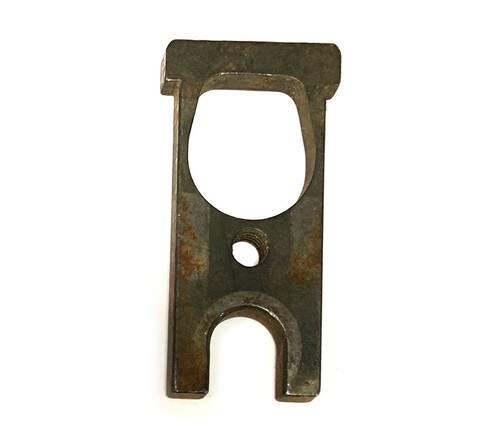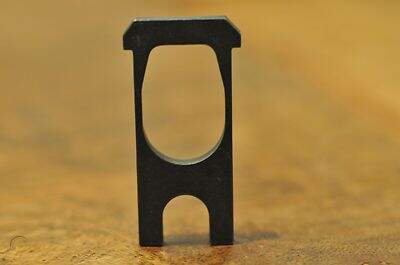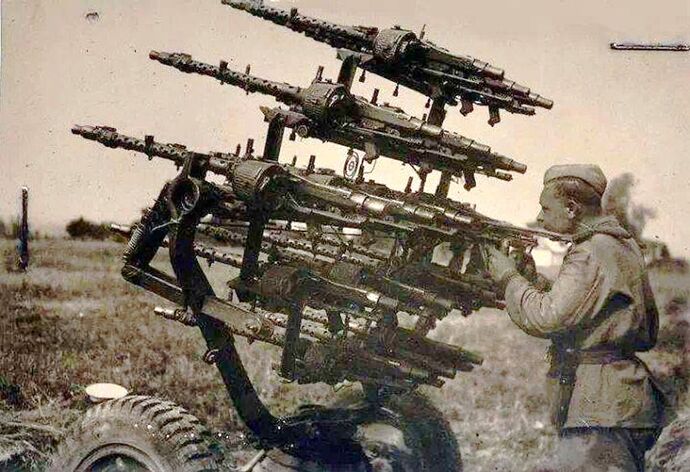FWIW, the matter of the degree of precision fire from a MG is best understood by looking at the definition of the “beaten zone” (referenced numerous times in @Mrclark7 manual quotes).
MG are intended / designed to create a “cone of fire,” and the area on the ground onto which the “cone of fire” intersects is the “beaten zone.” This cone of fire is the area in front of the muzzle through which all of the rounds fired in a given “burst” pass through - some rounds going high, some low, some to the left and some to the right of the precise point of aim. The rest passing somewhere within these maximum / minimum elevation and deflection points. The cone described by the maximum deviations (in elevation and deflection) with its apex at the muzzle end of the MG is the “cone of fire.” Eventually, all of the rounds which created this “cone of fire” will impact with the ground, creating the “beaten zone.”
The common doctrinal “burst” of fire of six to nine rounds fired for each pull of the trigger is intended to produce a certain probability of a desired number of casualties (the targets usually described as standing) in each “beaten zone.” However, if the range to the target area is increased beyond the usual range of “grazing fire” (generally somewhere around 600-700 meters for ~.30 cal / 7.62 mm cartridges), the number of rounds fired between adjustments of the traverse or elevation are recalculated to achieve the desired density of rounds into the larger “beaten zone” area (to size of the cone of fire generally increases as range to the target area also increases).
(I have an example of a reprinted US Army manual from the 1920s that has chapters on infantry lessons learned during WWI. One of the chapters discusses the use of MG in the indirect fire mode. In that example, the MG company commander has calculated the number of rounds each MG must fire between each traversing shift to achieve the required results on target. IIRC, each gun was firing around 1000 rounds to saturate its beaten zone on a target area about 3000 yards away from the firing position. The company was to fire a total of around 100,000 rounds during the regimental attack.)
Different armies at different historical periods have drafted their MG employment doctrines to define these characteristics according to their own requirements (things like the desired number of rounds fired for each burst, increments of traverse or elevation to overlap the beaten zones at various ranges to achieve the desired density of shots with predictable percentages of casualties, etc.).
For example, note that “grazing fire” usually anticipates the center of the cone of fire to never be higher above the ground than 1/2 the height of the standard target (usually the “standing” man) and is usually defined or specified as about 36" or 1 m. What then usually happens is that the rounds describing the bottom of the cone of fire begin to intersect the ground at about 400-450 meters with the rounds describing the top of the cone of fire finally hitting the ground around 700 meters. Note that the width of the cone of fire (and the resulting beaten zone) for grazing fire is generally around 4-5 meters at a range of about 650-700 meters. These are average planning figures for .30 cal / 7.62 mm cartridges, but individual performance should be understood to vary according the specific cartridge and MG.
However, the particular doctrine might further define the limit of grazing fire as, say, 600 meters (even though the beaten zone might continue well beyond that range). it may be that the doctrine discounts the far end of the beaten zone because the shot density for the specified burst size is too low for the desired and predictable number of casualties. Another army, on the other hand, might define grazing fire to the limit of the far end of the beaten zone but also specify that the gunner fire 10 to 15 rounds per burst.
Bottom line, though, is that MG are almost always considered area weapons in the same sense that artillery or mortars are also considered area weapons. For all of these, precision is measured in terms of predictable percentages of casualty producing effects at different ranges according to the number of rounds fired at that target / area. The question is, is it precise enough?






